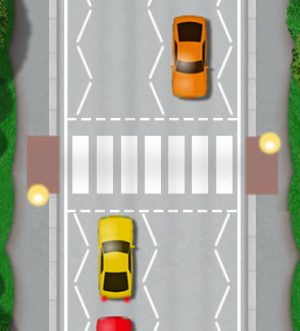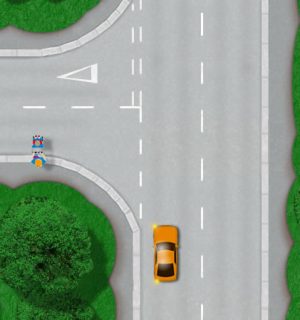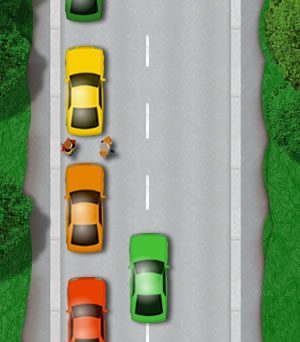As a driver, you will of course encounter pedestrians. Cars and pedestrians are generally not an ideal combination, so let’s look at some situations where as a car driver, you may need to be extra cautious.
Pedestrian Crossings
Pedestrian crossings are a typical location where cars meet pedestrians. As a driver, anticipate and plan ahead – look what’s going on around a pedestrian crossing, and not just what’s on it. Zebra crossings represent the most hazardous crossing for pedestrians as they rely entirely on drivers judgement for giving way.
As you’re approaching a Zebra crossing, take a good look either side for pedestrians approaching as soon as you spot the crossing. This will enable you plenty of time to react accordingly. If either end of the crossing is difficult to see, slow down so you can stop sooner if need be.
Be aware that on some Zebra crossing, pedestrians can seemingly appear out of nowhere, so use judgement of what you can see and use appropriate speed based on this. Other hazards include children on cycles that may approach quickly and cross and take into account elderly pedestrians who may need extra time to make the crossing.
On busy roads, particularly in rush hour traffic, vehicles may be queuing either side of the crossing. This can make it difficult to spot pedestrians crossing, particularly children. In these situations, approach the crossing slowly and with extreme caution.

At light controlled crossings (Pelican, Puffin, Toucan), look in good time as you’re approaching for waiting pedestrians. This gives you a clue that the lights may change if they’ve been waiting a while, so slow down and prepare to stop.
A Pelican crossing has a flashing amber after the red light. Remember, this doesn’t mean go, it means go only if the crossing is clear, so check before moving off. For a drivers guide on pedestrian crossings, see:
Pedestrians Crossing the Road
You have probably crossed the road as a pedestrian and before doing so, take a good look up and down the road before crossing to ensure it’s safe. A common place for pedestrians to cross the road is at junctions, or left and right turns from a drivers point of view.
Most pedestrians will of course look to ensure it’s safe before crossing, however, before making the turn, observe the road to ensure no pedestrians are in the road. The elderly who often need more time to cross are particularly vulnerable as well as children who might not look properly before crossing.

Use judgement to gauge an appropriate speed for turning. Some junctions are ‘open’ which means you can see clearly before making the turn, whilst others are ‘closed’ meaning you can see very little. If you can’t see much, slow down so that you can stop in good time should you need to. For further information on left and right turns, see:
Pulling out of Driveways
Pulling in or out of a driveway will often involve crossing a pavement. Be sure to check up and down the pathway for pedestrians and allow them to safely pass before entering the driveway. Pulling out of a driveway in particular is often hazardous as bushes and fences can obscure the pavement. Proceed very slowly to allow pedestrians time to react and stop.
Children
Children can often be unpredictable, which becomes even more hazardous when you can’t see them. A typical example is in a street with lots of parked vehicles. Children due to their small size can easily be obscured by the parked vehicles and due to their nature may run into the road without checking its clear.
Use judgement based on what you can see and how quickly you might need to stop to determine your speed. Some of these urban roads have a 20 mph limit, though less may often be required.

another hazard to be aware of in this situation are people opening car doors to exit a vehicle. Though it’s not always [possible, try and leave 1 metre gap between you and parked cars to allow for such an unpredictable circumstance. For a more in depth tutorial, see:
Be particularly cautious around schools where children are crossing the road and exiting cars. Passing a school bus that is letting off children must be passed with extreme caution.
Weather and Low Light
Bad weather conditions such as rain and fog reduce visibility for a driver to see pedestrians. It also reduces a pedestrians ability to see vehicles. Ensure your lights are on in low light conditions and use your signals appropriately.
